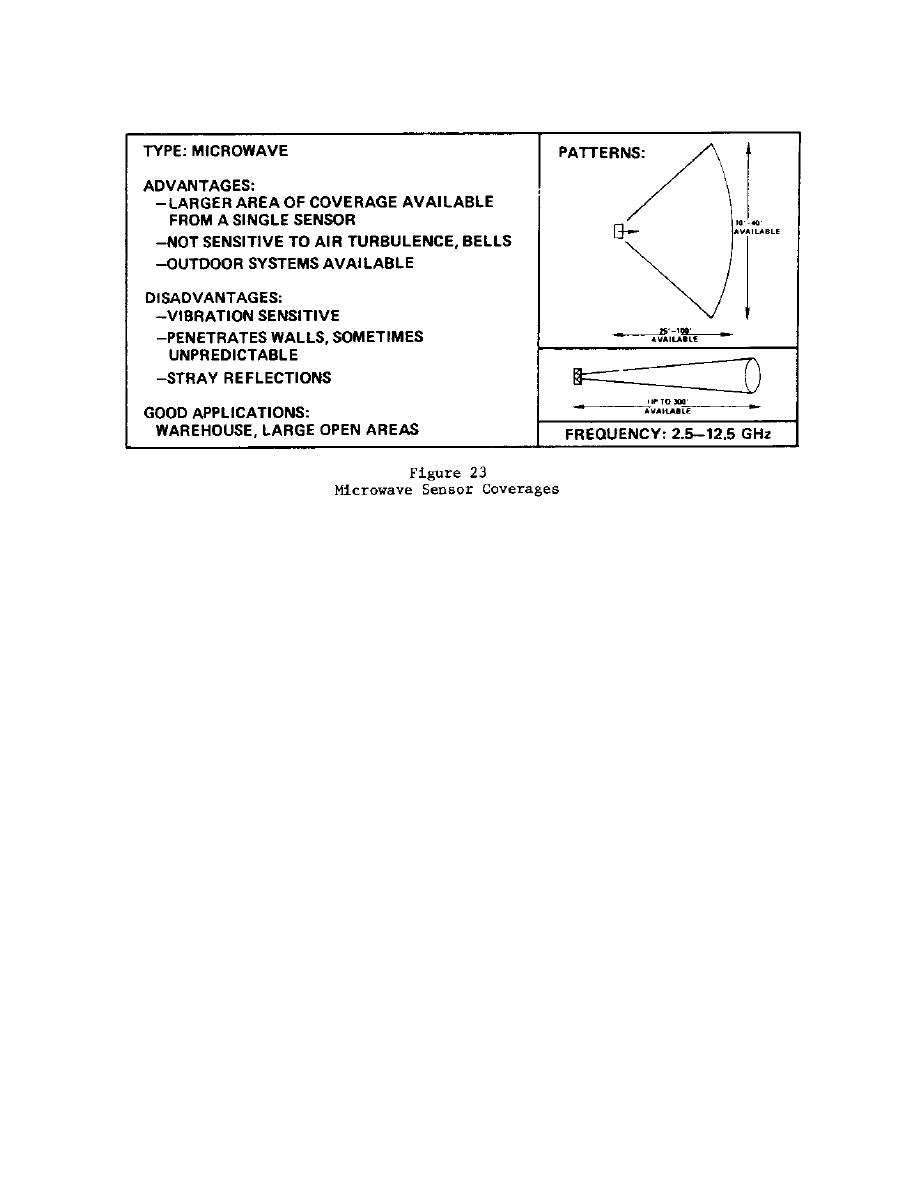

Custom Search
|
|

|
||
 4.2.3 Microwave Sensors. This sensor consists of a transceiver which
transmits and receives a "radar" frequency electronic wave pattern. The
sensor electronics will detect an alarm when movement is sensed by causing a
change in the received, reflected wave pattern. Most sensors will detect a
3-foot object moving at various speeds. The area of protection can be
adjusted by switching antenna, thus widening or narrowing the wave pattern.
Pattern examples are depicted in Figure 23. The wave pattern will penetrate
glass, masonry walls, and other nonmetallic barriers, while metal objects
(even some metal screening) reflect the waves. Penetration of building
walls and detection of nuisance stimuli such as vehicular traffic can be a
problem. The following considerations for application and installation
apply to microwave sensors.
4.2.3.1 Applications. The application for a microwave sensor is similar to
an ultrasonic sensor, except that:
a) Microwave sensor energy penetrates most building materials and
walls, thus detecting stimuli outside the protected area. Aim of the sensor
at an outside wall or window should be avoided.
13.02-48
|
 |
|
 |
||